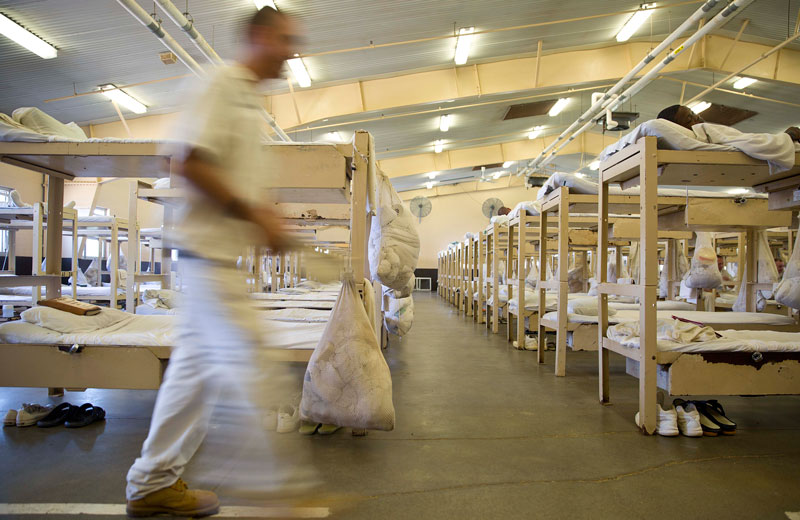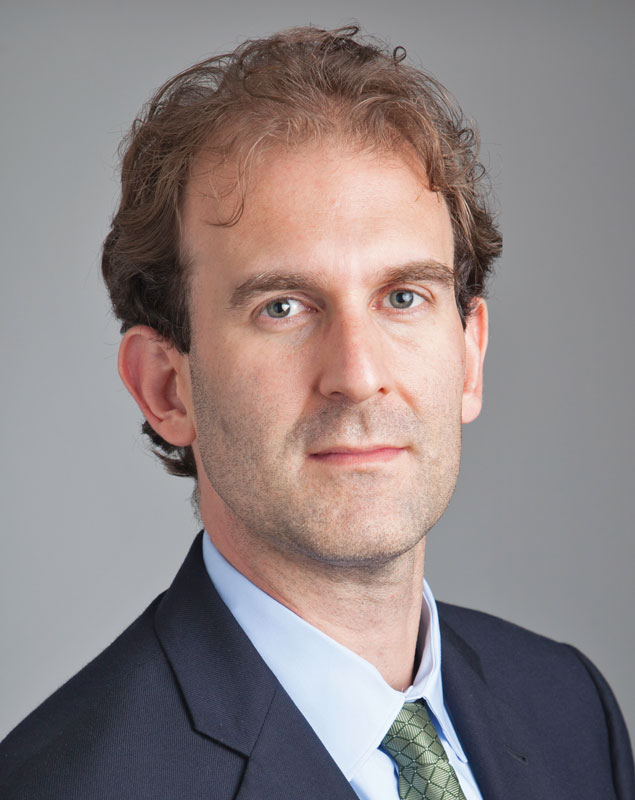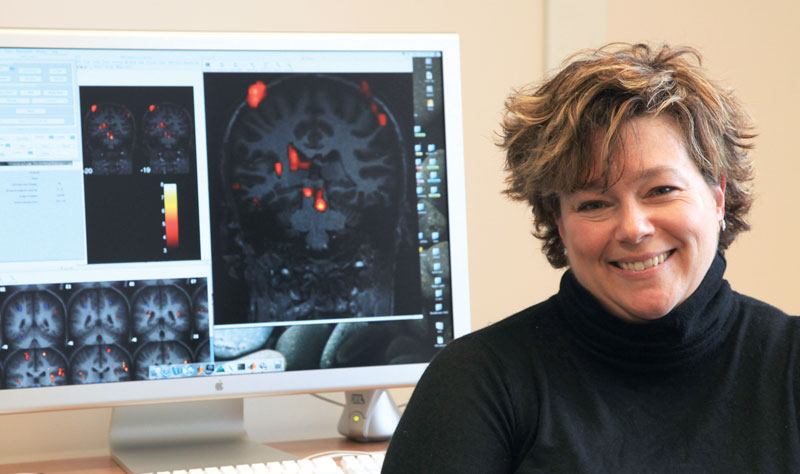Criminal Justice System on Trial

The United States leads the world in rates of incarceration, with 2.3 million individuals behind bars. Ezekiel (Zeke) Edwards ’95, director of the ACLU’s Criminal Law Reform Project, and professors Laurence Steinberg ’74 and Abby Baird ’91 are working to reform the nation’s criminal justice system.
The United States has by far the largest incarcerated population in the world, with 2.3 million of its citizens behind bars in federal and state prisons and county and municipal jails. (China follows with 1.7 million prisoners and Russia comes in third with 650,000.)
Among the organizations and individuals working on criminal justice reform are three Vassar alumnae/i— Ezekiel (Zeke) Edwards ’95, Abby Baird ’91, and Laurence Steinberg ’74.
The American Civil Liberties Union’s Criminal Law Reform Project, where Edwards is director, focuses on the “front end” of the criminal justice system—before defendants enter the prison system. Edwards says his program wants to make sure all police practices are constitutional and effective (and that police follow protocol); improve defense systems for indigent defendants; restructure bail-setting practices so poor defendants don’t spend several months or longer in jail before a trial ever takes place; and reform drug policies that impose excessive sentencing due to mandatory minimum guidelines.
“Our work is on bringing fairness, sanity, and equity into the criminal justice system,” Edwards says.

Incarceration rates grew steadily in the late ’70s, says Edwards, noting that from 1978 to 2014, the prison population in the U.S. increased 790 percent. The War on Drugs brought millions of mostly young—often minority—men and women to prison, imposing new drug laws with heavy penalties for crack cocaine possession, increasing sentencing limits, and changing certain misdemeanors into felonies. A 2013 ACLU study noted that of those serving life without parole for nonviolent offenses, 79 percent were incarcerated for drug-related convictions.
Today, 37 percent of prisoners are African American, 32 percent are white, and 22 percent are Hispanic, according to the Bureau of Justice Statistics. Disparities in the justice system contribute to the skewed makeup of the prison population, says Edwards. On average, he notes, minorities receive longer prison sentences than white defendants for comparable crimes—often life without parole for nonviolent offenses like serving as a middleman for the sale of $10 worth of marijuana—and harsher sentences for crack cocaine versus powder cocaine, ecstasy, and other drugs. One Seattle study found that African Americans were 10 times as likely as whites to go to prison as a result of a drug conviction, and another study noted that an African American is 3.73 times more likely to be arrested for marijuana possession than a white person is, despite approximately equal rates of use. This is, in part, because racial targeting (or profiling) by authorities makes blacks more likely to encounter police, Edwards says.
With the War on Drugs came a new outlook on incarceration—away from rehabilitation and toward punishment—decreases in funding for mental health and addiction services, and the loss of early release and parole options, he says.
“Prisons became where we put people with drug addictions and mental health problems. People started finding that it was easier to put people in a cage and throw away the key than dealing with the problem,” Edwards says.

While politicians supporting this new push were heralded for being tough on crime, prisons became “revolving doors” due to the lack of support for those who are released, he says.
But there is hope. The issue of criminal justice reform has become of interest to a rare grouping—a bipartisan collection of elected officials. The Senate Judiciary Committee recently presented to Congress the Sentencing Reform and Corrections Act, which aims to reduce prison populations by retroactively changing mandatory minimum terms for nonviolent offenders. Congress is set to vote on it soon.
Mass incarceration has come at a cost not just to the individuals who are incarcerated. The average cost to keep an individual in prison can vary widely—a recent study reported that the figures range from $14,603 in annual costs per inmate in Kentucky to $60,076 in New York. The total cost to house America’s prisoners is a whopping $80 billion annually.
According to ACLU reports, private companies have raked in billions building and maintaining prisons during the War on Drugs. These companies profit in such areas as food service, telecommunications, and health care. And that doesn’t include money being made from prison labor. The labor varies widely—from working the farms at the Louisiana State Penitentiary at Angola to manufacturing clothing, furniture, and other products. Inmates earn a few dollars for a full day of labor, which is sometimes forced by threatening solitary confinement and other punishments for those who don’t work.
“I think we are at a watershed moment, perhaps a tipping point, in criminal justice reform,” Edwards says. It’s significant that politicians and presidential hopefuls are addressing the topic, he says, but more needs to be done to educate the public about the industrial prison complex and the state of America’s system.
Educating the public about how the justice system regards juvenile defenders is of particular concern to Abby Baird ’91, professor of psychology at Vassar, and Laurence Steinberg ’74, a Temple University distinguished professor of psychology—two researchers whose work demonstrates the far-reaching repercussions of trying juveniles in adult criminal court.
Baird, who studies neural development during adolescence, works to educate judges and attorneys about the detriment of life sentences, solitary confinement, and adult criminal courts for juveniles. In 2005 she wrote an amicus curiae brief for a Supreme Court case (Roper v. Simmons) in which the court came out against death-penalty sentences for juveniles.

In that same case, the court noted Steinberg’s published paper—“Less Guilty By Reason of Adolescence”—in its decision.
Research indicates that adolescents don’t have fully developed brains and lack the sufficient judgment to assess risks and consequences, Baird notes. Teenagers are “practicing to be adults” and lack the culpability of adults, she adds.
Youth, she notes, are not immune from the inequities found among adult defendants. Baird says that there can be significant changes in how juveniles are dealt with depending on ethnicity and where a defendant lives. A rural teenager in Upstate New York who helped steal a car might be a given a “second chance” by a local deputy whereas a Brooklyn 15-year-old might end up awaiting arraignment in Riker’s Island for the same crime, she says.
No matter who the defendant is, Baird says, “No one would argue that [juveniles] should be let off the hook,” but their cases should be adjudicated in a juvenile court with a goal of rehabilitation.
Steinberg, author of Age of Oppor-tunity: Lessons From the New Science of Adolescence, is the former director of the MacArthur Foundation Research Network on Adolescent Development and Juvenile Justice, which began in 1997. Officials at the foundation believe that shortcomings in juvenile justice derive, in part, from “the absence of an informed understanding of child and adolescent development among a large number of juvenile justice practitioners and policy makers.”
A clinical psychologist and researcher specializing in adolescents, Steinberg says that when he began working on juvenile justice reform 20 years ago, adolescent offenders were seen in criminological terms. In essence, he says, judges, prosecutors, and others in the system tended to think of juveniles as young criminals set on a predetermined course instead of juveniles who had had lapses of judgment and could be turned around. They “had lost sight of the fact that kids were fundamentally different from adults in important ways that ought to inform how we treat them when they come into contact with the justice system,” says Steinberg.
“We found that the practice of suspending students [from school] increases rates of arrest because it means kids are spending time on the streets, unmonitored, when they would otherwise be in school,” Steinberg says.
Complicating matters, Steinberg contends, is the growing “school-to-prison pipeline” that results from the presence of law enforcement officers in schools; the criminalization of fairly common teenage behaviors such as truancy and fighting—behaviors that used to be handled informally; and the high rates of students carrying weapons in some school districts.
In one juvenile justice reform project, on which Steinberg is a principal investigator, the focus is on researching the effectiveness of diverting first-time offenders from processing in the system. The project is following 1,200 adolescents in three cities—Philadelphia, New Orleans, and Santa Ana, CA—to see the differences in the psychological and behavioral development between first-time adolescent offenders who are formally processed into the system versus those who are diverted out into community-based programs. Steinberg says school attendance requirements, counseling, and other support in the community-based models are showing positive results, based on preliminary results. On the other hand, those that go into the system are likely to come into contact with it again and again in the future.
Steinberg says, “The more we can keep kids out of the system and the more we can keep kids who are in the system from penetrating more deeply into it, the better off they are.”
Baird agrees. Juveniles that come into contact with the criminal justice system can either learn to be adults in adult prisons, where they will likely be beaten and raped, or in rehabilitative programs that require mandatory education, counseling, and other services, she says.
The good news is there are many groups emerging with viable alternatives to juvenile incarceration, Baird notes.
Edwards says that while hope is on the horizon for more fair and sane sentencing for both adults and adolescents, the problems are on a grand scale and no single piece of legislation will remedy all the issues.
“It’s one thing to talk and then another thing to put pen to paper and get bills signed,” he says. “Change often comes incrementally, and we’ve dug such a deep hole that I’m hoping that we don’t just see a little incremental change at this moment of recognition and bipartisanship and then stop there and move on to other things and decide we have done enough.”
